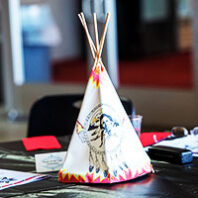
Winter 2021
Coming Home to Nez Perce Country: The Niimíipuu Campaign to Repatriate Their Exploited Heritage
Review of Coming Home to Nez Perce Country by Trevor Bond, published by WSU Press » More ...





Founded 25 years ago at Washington State University, Na-ha-shnee has given Native American high school students hands-on experience of the health care professions.
Many graduates of the Na-ha-shnee summer camp have gone on to successful health care careers, including Sarah Burke, Cheryl Ellenwood, Shian Kelly, Rhonda Martinez-McFarland, Shoshannah Palmenteer, and Hailey Wilson.
Sarah Burke graduated with her bachelor’s in nursing from Washington State University in 2018—just in time to be greeted by a coronavirus pandemic.
“It’s been crazy!” says Burke of her nursing job at EvergreenHealth Medical Center in Kirkland. “I … » More …



